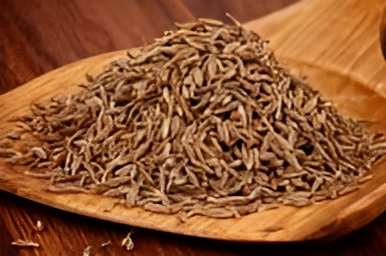
The Versatile Spice: Cumin
Cumin, a small but potent spice, has been cherished for centuries for its distinct flavor and numerous health benefits. Originating from the Mediterranean region and parts of Asia, cumin seeds come from the plant Cuminum cyminum and are widely used in cuisines around the world. In this article, we’ll explore the culinary uses, health benefits, and cultural significance of cumin.
Culinary Uses of Cumin
Cumin is a staple in various cuisines, including Indian, Middle Eastern, Mexican, and North African. It is available in two primary forms: whole seeds and ground powder. Each form brings a unique flavor profile to dishes.
- Indian Cuisine: In Indian cooking, cumin is often used in spice blends like garam masala. It can be dry-roasted to enhance its nutty flavor before being ground into powder. Cumin is a key ingredient in dishes such as curry, dal, and various vegetable preparations. Its warm, earthy taste complements the spices and ingredients commonly found in Indian recipes.
- Mexican Cuisine: In Mexican dishes, cumin adds depth to salsas, chili con carne, and taco seasoning. It works well with ingredients like tomatoes, beans, and corn, enhancing the overall flavor of these dishes. Ground cumin is often sprinkled over roasted meats and vegetables for added zest.
- Middle Eastern Cuisine: Cumin is integral to many Middle Eastern dishes, including hummus, falafel, and various kebabs. The spice’s aromatic profile blends beautifully with garlic, lemon, and tahini, creating delicious and savory flavors.
- North African Cuisine: In North African dishes like tagines and couscous, cumin plays a vital role in creating rich, layered flavors. It is often paired with other spices like coriander and cinnamon, making it a fundamental component of the region’s cooking.
Health Benefits of Cumin
Beyond its culinary uses, cumin is renowned for its potential health benefits. The spice is rich in antioxidants and essential oils, which contribute to its therapeutic properties.
- Digestive Health:Traditionally, cumin has been utilized to promote better digestion. It has carminative properties, which help relieve bloating and gas. The spice stimulates the secretion of digestive enzymes, promoting better absorption of nutrients.
- Rich in Iron: Cumin is an excellent source of iron, making it beneficial for individuals who may be prone to anemia or those who require additional iron in their diet. Including cumin in meals can help maintain healthy iron levels.
- Anti-inflammatory Properties: The active compounds in cumin, such as cuminaldehyde, have anti-inflammatory effects.Frequent ingestion could potentially minimize the risk of chronic diseases by reducing inflammation in the body.
- Immune System Support: The antioxidants present in cumin help boost the immune system. They combat free radicals, reducing oxidative stress and protecting cells from damage. This property can contribute to overall health and well-being.
- Weight Management: Cumin may help with weight management, according to some research. Its potential to enhance metabolism and fat oxidation can be beneficial for those looking to maintain or lose weight. Adding cumin to a balanced diet may support healthy weight loss efforts.
Cumin in Cultural Context
Cumin has a rich history that extends beyond its culinary and medicinal uses. It has been a symbol of protection and love in various cultures. In ancient Egypt, cumin was used to preserve mummies and was believed to guard against evil spirits. The spice was also mentioned in the Bible, highlighting its significance in ancient times.
In many cultures, cumin is associated with rituals and traditions. For instance, in some Middle Eastern weddings, cumin is used in ceremonies to symbolize fertility and love. Its presence in culinary traditions reflects the cultural heritage and diversity of the regions where it is used.
How to Use Cumin in Your Cooking
Incorporating cumin into your cooking is easy and can elevate the flavors of your dishes. Here are some tips:
- Whole Seeds vs. Ground: Decide whether to use whole seeds or ground cumin based on your recipe. Whole seeds can be toasted to release their oils and enhance flavor, while ground cumin is ideal for quick incorporation into sauces and marinades.
- Start Small: If you’re new to using cumin, start with small amounts and gradually increase to your desired flavor intensity. A little goes a long way, as cumin can be quite potent.
- Pairing Flavors: Cumin pairs well with various spices, such as coriander, paprika, turmeric, and chili powder. Experimenting with different combinations can lead to delicious and unique flavor profiles.
- Culinary Techniques: Try adding cumin to roasted vegetables, stews, or soups. It can also be sprinkled over grilled meats or incorporated into marinades for added depth.
- Baking: For a twist on traditional baked goods, consider adding a pinch of cumin to bread or savory muffins. It can provide a delightful surprise and enhance the overall flavor.
Conclusion
Cumin is more than just a spice; it’s a culinary treasure with a rich history and numerous health benefits. Whether you’re using it in traditional dishes or experimenting with new recipes, cumin’s unique flavor can elevate your cooking. It is a beneficial supplement to a balanced diet because of its health benefits. Embrace the versatility of cumin and discover the many ways it can enhance your meals and contribute to your well-being.
By incorporating cumin into your daily cooking, you not only enjoy its distinctive taste but also reap the benefits of this remarkable spice. So, next time you’re in the kitchen, don’t forget to reach for the cumin—your taste buds and your health will thank you!